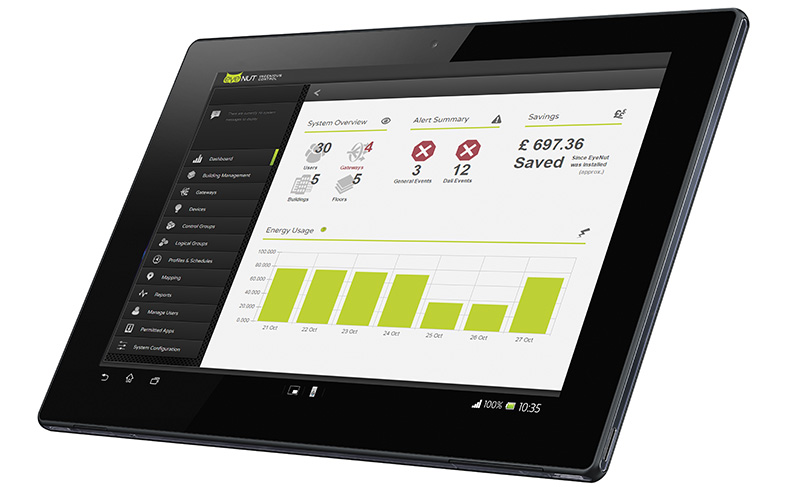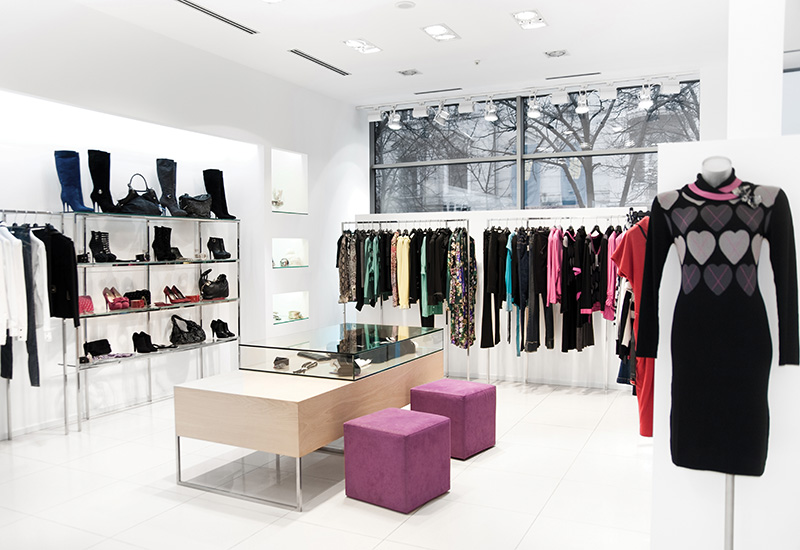New generation of controls makes light work of energy savings.
By Antony Corrie
Lighting is one of the most significant items in the running costs of any building, typically representing 30% of the total electricity bill for a commercial site, yet adoption and use of energy-saving lighting controls is poor. The following article explains why and describes how a new generation of wireless, user-friendly lighting controls is about to change everything.
The opportunities to save energy through calculated use of lighting in the retail sector are immense. Few buildings require a blanket approach to lighting. Stores can throw a spotlight on their displays while saving energy by dimming other areas at pre-determined times, using movement sensors in store rooms and bathrooms, and light sensors to ensure that artificial lighting is used to augment natural light only when necessary.
Similarly, restaurants benefit from a sophisticated array of lighting options — from bright functional lights in the kitchen to ambient lighting in the dining area. Outside opening hours, shopping centers still require lighting for security purposes but can save energy by dimming lights and returning them to full lux if movement is detected.
These are sophisticated requirements and energy-saving opportunities which current lighting controls are able to meet but only at significant cost and with no little difficulty. Traditional controls, such as Analog 0-10V, require the expensive and potentially disruptive installation of wires as well as the services of a specialist engineer to commission the system. Flexibility is limited in these circumstances.
 A New Solution
A New Solution
Industry-changing technology offers a wireless, web-based solution to these challenges which is not only easy to install but so user-friendly that controls can be easily managed and altered in-house. These wireless systems offer proven savings of up to 40% on top of the benefits that are gained by a switch to LED lights — desirable though not mandatory for these controls.
The technology uses the reliable ZigBee standard to operate lights from a computer. It is capable of controlling an impressive 500 light points from one wireless gateway. The wireless gateway can be particularly useful for retail facilities managers, as, for the first time, it means it is possible to operate lights for multiple buildings or multiple sites from one single computer hub, from any web browser, providing extensive energy and operational savings.
The new lighting solutions are wholly customizable, allowing the user to fully and precisely control individual lights or groups of lights at the press of a button on a computer, laptop or tablet. One system achieves this via an intuitive, user-friendly ‘dashboard’ or Graphic User Interface (GUI) to set up or change preferences. Users can create their own lighting groups, or control and manage schedules through the profiling feature. Assigned schedules can be simple or sophisticated — on, off or different levels with variations possible up to every 15 minutes, 365 days a year.
The dashboard also has a mapping feature which gives the operator a clear and complete view of all light points set over an imported image of their building layout. This makes it easy to see energy ‘heat spots’ and how much energy lights are consuming. A two-way flow of information enables well-informed decisions to be made on how to adapt lighting to meet sustainability targets using the energy reports and data output provided.
These new wireless lighting solutions are also compatible with other control gear, meaning that lights can work in parallel with photocell sensors so that they only come on at a level necessary to augment levels of natural daylight, as well as connecting with passive infrared (PIR) detectors to switch lights on and off or dim them, depending on occupancy, and integrate with existing building management systems to collect occupancy data.
 Savings in Store
Savings in Store
At a 48,000-square-foot department store, the installation of a control solution could make a 40% reduction in energy bills, in addition to the savings generated by using LEDs, by implementing a number of control strategies. The lighting control strategies can all be managed from one central computer, to allow ease for the user. The wireless nature of the new technology also means that the installation of controls to an already existing LED lighting scheme is easily achievable.
At this particular store, it was recommended that sales floors were divided into zones, separated by aisle areas. Within each of these zones, ambient lighting, central accent lighting and perimeter accent lighting of vertical surfaces should all be controlled independently as should lighting on aisles, stairwells and entrance areas. Occupancy sensors were also recommended to measure footfall by floor and zone, as well as accent lighting, which could be selectively dimmed, to enhance displays.
The profiling feature would enable accent lighting to be switched off and ambient lighting to be dimmed during cleaning and stocking. Windows would also be installed with daylight sensors so that window lighting can be dimmed or switched off in sunshine.
The usually time-consuming installation process would also be easy, as would adding additional lights to the network, thanks to the new technology’s ZigBee functionality. Some systems also come pre-commissioned, providing users with a ‘plug-and-play’ solution, which is ready to be installed out of the box.
Managing the network through the ‘dashboard’ screen which shows all the light fittings on a layout of the store, is straightforward and data reports would be provided on lamp status and energy to help reduce maintenance costs and put the store in control of their energy spend.
If the above strategies were installed, it is anticipated that electricity consumption would be reduced from 1,500kWh to 330kWh, indicating a rewarding 2-year payback on the store’s investment.
The retailer may choose to install the technology in more of its stores. If so, its investment can be maximized by streamlining services and managing lighting from one single hub.
Reducing the amount of energy wasted on lighting not only makes sound commercial sense but will, of course, also benefit the environment. According to the International Energy Agency, the amount of carbon dioxide produced from generating electricity for lighting is three times more than the emissions produced by aviation. It calculates that installing energy-efficient lighting systems across the world could cut global energy consumption by as much as 10%.
Controlling excessive use of lighting would certainly contribute significantly to America’s own ambitious environmental target of cutting 2005 greenhouse gas emission levels 30% by 2025. This new generation of control technology brings mainstream use of lighting controls one step closer.
— Antony Corrie is vice president of Harvard Americas, part of the UK-based company Harvard Engineering, world leader in the design, development and manufacture of energy saving lighting solutions, with over 20 years’ experience. More information can be found at www.eyenut.co.uk.
